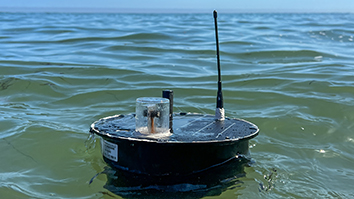Citation
Romeiser, R., Graber, H. C., Caruso, M. J., Jensen, R. E., Walker, D. T., & Cox, A. T. (2015). A new approach to ocean wave parameter estimates from C-band ScanSAR images. IEEE Transactions on Geoscience and Remote Sensing, 53(3), 1320-1345.
Abstract
Because of their large swath widths of about 400-500 km, the ScanSAR modes of RADARSAT-1 and -2 and of the Advanced SAR (ASAR) system on Envisat have been the preferred modes of operation for hurricane and typhoon observations and similar applications. While C-band ScanSAR images have been demonstrated to be well suitable for wind retrievals, ocean wave retrievals are a more challenging problem: Because of the limited spatial resolution of 100 m (RADARSAT)/150 m (Envisat), only long waves can get imaged directly, and many images of tropical storm scenarios do not exhibit clear signatures of any waves in large areas. The interpretation of wave patterns that exist in an image is difficult because of the imaging mechanism’s nonlinearities. We think we have found a promising new technique for wave parameter retrievals from C-band ScanSAR images, which determines peak wavelengths and directions from image spectra where possible but uses an empirically determined relation to estimate significant wave heights (SWHs) from local mean image intensities, which is similar to the method used for wind retrievals. This way, it is possible to obtain SWH estimates for the entire image and to account for the contributions of subresolution-scale waves. We explain how the algorithm works and how the empirical SWH model function has been determined from a set of hurricane images from RADARSAT-1 and reference wave spectra from a numerical wave model. The first independent test with a set of RADARSAT-2 and Envisat images from the 2010 Impact of Typhoons on the Ocean in the Pacific (ITOP) experiment reveals a few weaknesses but essentially confirms the feasibility of the concept.


